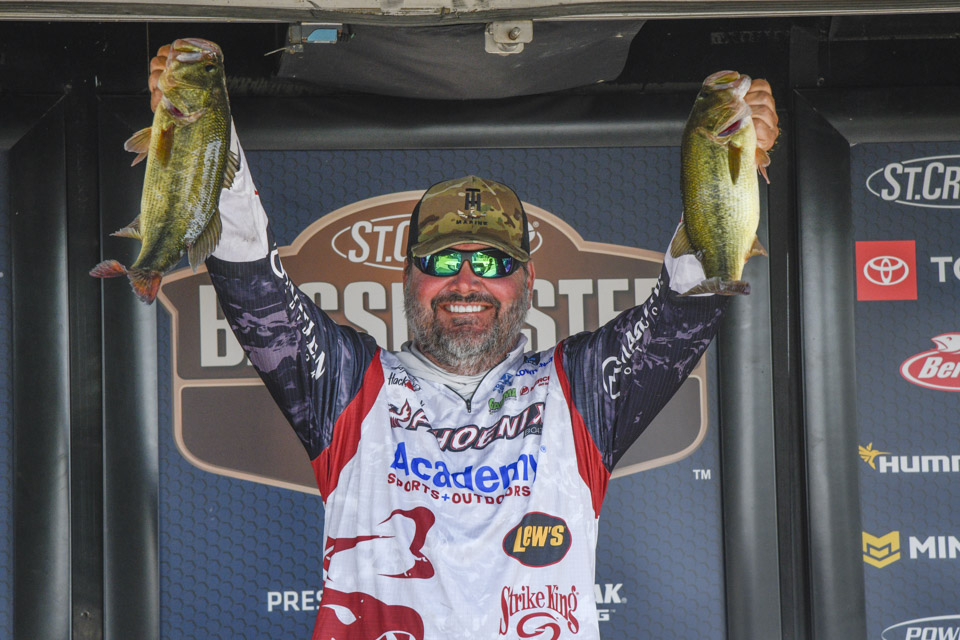
There is hope for better times to come for bass fishing success. It’s called the fall transition; that period when baitfish and bass become active again after spending the long, hot summer mostly inactive and tough to catch.
Before you pour that first pumpkin-spiced brew of the season, take note that the fall transition does not turn on like the flip of a light switch. It takes gradually increasing longer and cooler nights to trigger the bite.
Here are some useful tips from Bassmaster Elite Series pro Greg Hackney on how to catch bass in September and into October, when the transition is in full swing.
First, a primer on how the transition begins in September and early October in most areas. Bodies of water stratify into layers, and for the most part, the layer with the most oxygen content is the shallowest. The deep-water layers tend to lack quality oxygen content, except for the deepest, clearest reservoirs, and the bass tend to live shallow.
With that said, baitfish populations also live in the shallows. When the nights turn longer and the overnight temperatures start to noticeably cool the transition begins and the bite turns on.
First, you must endure the early fall transition.
“That transition between summer—when it’s still really warm—and fall is the toughest time of the year to catch bass, no matter where you are,” Hackney said.
“This is the time of year when the bass don’t have to be oriented to any structure. They just roam around following and feeding on bait.”
Hackney is in the midst of the above scenario now at the St. Croix Bassmaster Central Open at Red River presented by Mossy Oak Fishing. After Day 1, he sat in 5th place with just 11 pounds, 14 ounces, or 2 pounds shy of the lead. The temperature hovered around 100 degrees with only a slight breeze to make it feel cooler.
“This river right now is completely overrun with shad,” Hackney said. “They are out in the main river and throughout the backwaters.”
“This time of year, when it’s 100 degrees like it is here, we think bass have to be in the shade when they don’t; they are more oriented to shad than habitat,” Hackney added.
Shad can be roaming throughout the lake, which also means the bass aren’t relating as much to structure as they are the bait. Find the bait, find the bass, keeping in mind both are on the move to shallower water.
As the cooling effects of longer and cooler nights begin to drop water temperatures, the bass (and bait) follow predicable and well-defined paths. Nothing is random and it’s keyed to baitfish movement, which trumps all other factors that you usually consider.
Ideal areas to find bait and bass on the move are along transition areas leading into shallower water. Those include creeks, small coves or pockets, shallow shoals, humps and even shallow flats. Specifically, look for isolated cover in those areas that function as ambush points for the bass, such as wood or rock (large boulder or rockpile, giant laydown or stump).
Another key asset to the early fall transition is current, which helps stimulate bait and bass movement even when the daytime temperatures are still in the 80s and 90s.
“Moving water, be it current from a river, a dam discharge, or even wind-driven current, is often overlooked for what it does to get bait and bass moving,” Hackney said, with a wink and a grin.
When Hackney does that, he is on to something. He declined to share specifics, understandably because what he’s doing at the Red River are key to his good performance on Day 1.
“I will say that wind driven current can be created from wind breaks on a shoreline, such as a stand of timber, a bluff or steep bank,” he said. “It can be so subtle but be the deal for catching bass in this tough early fall transition period.”
Wrapping up the lesson means following this simple mantra. Find the bait, find the bass. Just begin your search where both will eventually be going, which are creeks leading to shallow water. When that begins to happen, raise a toast to the fall transition, pumpkin-spiced beverage and all.






